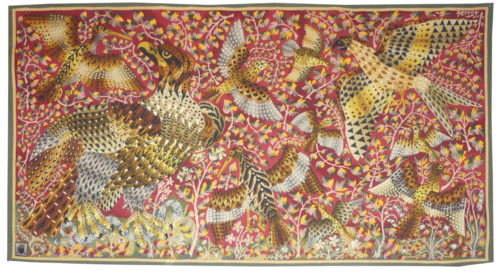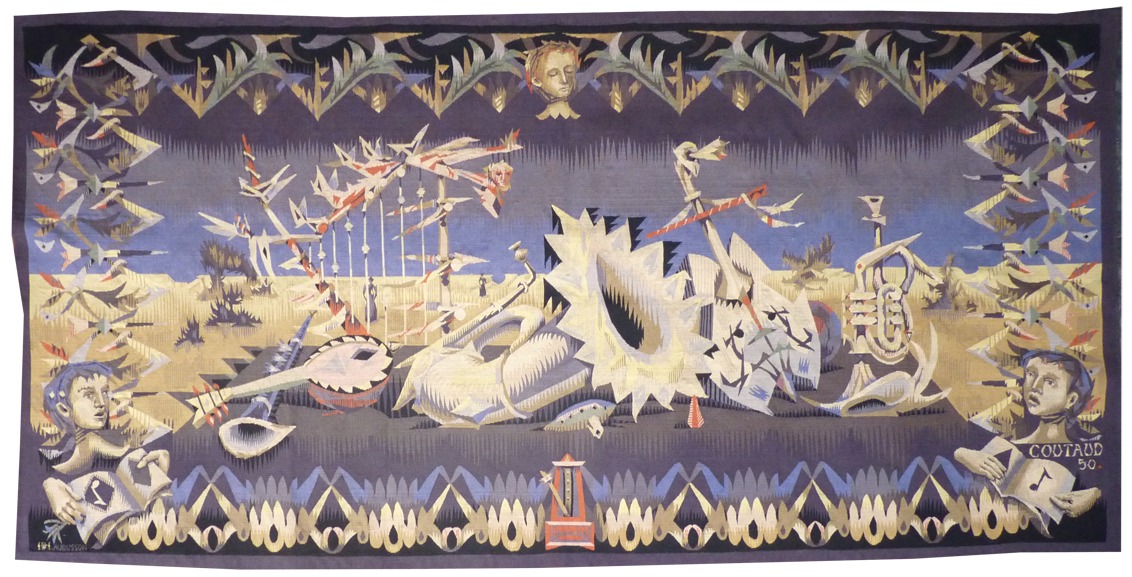Instruments de musique lunaire (instruments for moonlight music)
Aubusson tapestry woven by the Pinton workshop.
1950.
A painter and engraver, Lucien Coutaud also worked in the theatre with Dullin, Barrault and designed numerous sets and costumes. However it was his encounter with Marie Cuttoli in 1933 which would introduce him to tapestry : she mainly commissioned seat cover designs. Most of the tapestries that followed were woven in the Pinton workshop for the Compagnie des Arts Français, whose main aim was to integrate tapestry as an element of interior decoration. The last 3 tapestries designed by the artist in 1960 are a tribute to his notoriety because “Jardins exotiques” was chosen to decorate the 1
st class saloon on the “France” transatlantic liner.Elements of his work as a set designer, influenced by surrealism, are discernible in Coutaud’s woven art : the world he illustrates is figurative yet stylised (shapes are angular and harsh) contained in a dream world often incorporating unusual borders.
The cartoon « Instruments de musique lunaire » (Coutaud painted his own cartoons in watercolours without having recourse to numbered cartoons) dates from 1950 : it’s one of the few tapestries designed by this artist (notable also are « Harpe marine » Marine harp and « Violon printanier » Spring violin », as examples of his taste for musical still lives) where the human figure is absent. The centre of the scene (the stage) is occupied by the instruments, while two heads (blowing into musical instruments in the pit) take up the two bottom corners, the whole meanwhile being an austere scene, night time (hence the moonlight) a good representation of the dream-like universe inhabited by this artist’s creations.
The municipal theatre in Göteborg possesses a copy of this tapestry.
Bibliography :
J. Cassou, M. Damain, R. Moutard-Uldry, la tapisserie française et les peintres cartonniers, Tel, 1957, ill. p.86
Exhibition Catalogue Lucien Coutaud, œuvre tissé, Aubusson, Musée Départemental de la Tapisserie, 1988-1989, ill. p.42-43
Exhibition Catalogue Le théâtre en tapisserie, Cavaillès, Lurçat, Matisse, Sorèze, Abbaye-école Musée dom Robert, 2017, ill. n°8




